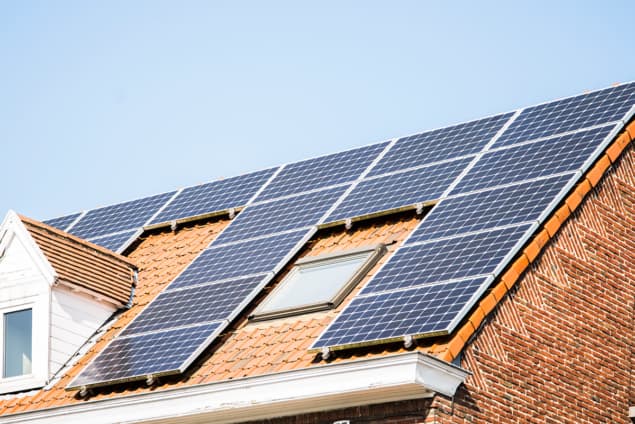
Put solar photovoltaics (PV) on the roof of your house and it’s win-win: plenty of power while the sun shines and a rebate on your electricity bill for the excess power you feed into the grid. But what happens when everyone has solar photovoltaics on their roofs? If not managed carefully, a plethora of rooftop solar panels can put pressure on the electricity grid, potentially increasing electricity prices and reducing the reliability of the electricity supply, finds a study in California.
In order to limit global warming to 1.5 °C, global carbon emissions must be net zero by 2050, according to the most recent UN Intergovernmental Panel on Climate Change (IPCC) report. Decentralised energy generation – home solar panels, for example – is a promising path for reducing emissions.
In sunny California rooftop solar PV has already proved a tempting option. Today nearly 10% of California’s electricity mix comes from individual rooftop solar panels. By 2030 this share is likely to more than double, particularly once the new building energy code comes into place and mandates rooftop solar PV for new buildings from 2020 onwards. But this switch to decentralised renewable power is not without its problems.
In California, grid operators are struggling with the sudden surge in evening demand (from 5 to 8 pm) once the sun goes down. Batteries to store surplus solar electricity help buffer the problem, but ultimately make grid electricity more expensive.
That’s because more people can support themselves from their home-generated electricity, resulting in a fall in demand for grid electricity. As a result, the fixed costs of electric utilities – such as infrastructure – are shared amongst a smaller pool of people. This pushes up bills, particularly for those that rely on grid electricity alone.
“Low income households rarely have the financial means to install solar PV systems, meaning that they are often hit hardest by the price rises,” explains Marius Schwarz from ETH Zurich in Switzerland.
Together with colleagues, Schwarz simulated California’s electricity market between 2005 and 2030 under four policy scenarios. The first takes the current path, where solar tax credits are phased out until 2022 and “time of use rates” are introduced for all electricity customers in 2019. The second considers support for solar at the 2016 level and a three-tiered costing for grid electricity. The third scenario shuts down solar credits from 2018 and switches to flat charges for grid electricity at the same time. Finally, the fourth scenario is the same as the first but with the addition of a fixed $35 per month charge for solar PV owners that is phased in between 2022 and 2030.
The researchers show that the current path has encouraged installation of battery storage systems, which has helped flatten out the spikes but will ultimately lead to increased electricity prices. Meanwhile, the third scenario – immediate shut down of solar credits – slows the price increase of grid electricity but causes a crash in the solar PV market.
“This results in a slowdown of carbon dioxide emission reductions and might jeopardize energy transition milestones and goals,” write the scientists in their paper in Environmental Research Letters (ERL).
The alternative path of scenario four, where solar credits are phased out and fixed charges for solar PV owners are introduced gradually, manages to counter the electricity price increase and enables steady adaptation of the grid to cope with demand.
“Fixed charges are likely to be opposed by solar PV customers because they lower the financial viability of solar PV, but our findings show that they are one promising way to ensure grid supply reliability and keeping electricity prices stable,” says Schwarz.
As other countries and regions seek to go carbon-neutral, they too must consider how to phase in changes to their power systems. As the California study shows, the path to carbon neutrality is not necessarily smooth.



